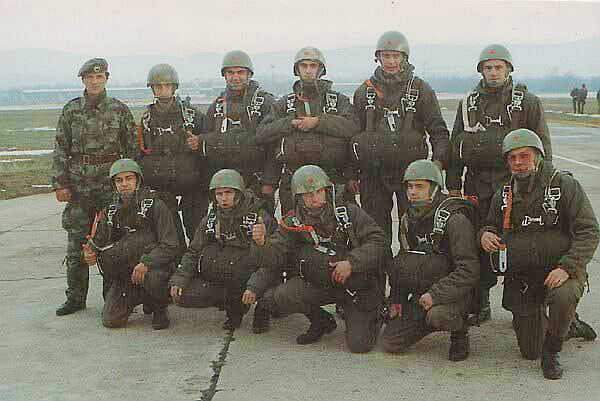About Us
The
Sixty-third Paratroop Brigade is intended for special reconnoitering and diversionary
operations in an enemy's operative-strategic depth. When the competence of the
63rd Paratroop Brigade members is analysed, the point to underscore is the safety
coefficient of parachutist training, a parameter which, in spite of several
tens of thousands of dives made in the last 15 years, is by far better than
the comparable safety indices for parachute units of the world's most powerful
armies. This speaks for the supreme training standards and competence of the
parachutists and a high degree of safety in training, which confirms that an
iron work discipline, excellent abilities of officers - parachute instructors,
highest-quality psycho-physical and expert coaching of the men, thorough checkups
and perfect condition of parachute accessories, outstanding morale of each individual
and exemplary military collectives, precede the highest peacetime professional
risk.
In addition to being a highest-rank combat unit of this type in the Army of Serbia and Monte Negro, the 63rd Paratroop Brigade is a unique "military school of parachuting". The paras are training experts on land also; they have an excellent knowledge of the mountain and its whims, of the plains, rivers and lakes, inhabited areas, communications and facilities of particular importance, in short, all the situations they may find themselves in both in peace and potential war. Sorties behind enemy front lines - reconnoitering and diversions - are their trademark.
In
all postwar crises, the 63rd Paratroop Brigade has always been the first, with
the highest degree of combat readiness. In the course of armed conflicts in
the territory of the former SFR Yugoslavia, the Brigade carried out all the
assignments honourably, protecting all airports it had been detached to. During
the 1999 NATO war on Yugoslavia, the members of the 63rd Brigade fought bravely
with the KLA terrorists in Kosovo and Metohija, but also with diversionary detachments
attempting raids from Albania on the territory of Yugoslavia. The 63rd Brigade
paras particularly excelled themselves in the defence of the Yugoslav-Albanian
border posts, where a number of our unit members were killed or wounded.
The Brigade carries out an average of about 6000 parachute dives and trains three generations of troops annually. It participates in tactical corps- and army-level live-ammunition drills. The 63rd Paratroop Brigade members have the best infantry materiel and weapons in the Army of Serbia and Monte Negro. They are armed with the Yugoslav-made 7.62-mm and 6.56-mm caliber submachine guns, 5.56-mm South African automatic rifles, 7.62-mm, 7.9-mm and 12.7-mm caliber snipers, 7.62-mm machine guns and various types of pistols and revolvers of their own choice. Of the heavier weapons, the 63rd Paratroop Brigade has at its disposal Yugoslav-made grenade-launchers, bazookas, hand rocket-launchers also of domestic make, the "Bumblebee" armour-piercing rocket system, and the 60-mm and 82-mm light mortars.
The
Yugoslav parachutists are basically an infantry unit, but can, in case of need,
use jeeps carried from place to place by the Mi-8 helicopters or the An-26 aircraft.
When necessary, they can also use 76-mm B-1 hill canons, also transportable
by air. Otherwise, the 63rd Paratroop Brigade uses standard, Yugoslav-made military
parachutes, but its strike units also have the "wing"- type parachutes
used for silent gliding and approach to target. Quite a number of unit members
are excellent civilian sports parachutists.

The
unit distinguishes itself by a high degree of loyalty of its former and present
members.
HOME
HOME

